Studio Brief: This studio asked third-year master’s students to propose a small-scale interpretive or welcome center at a National Park Service site. Situated at an abandoned coal mine in West Virginia, the property is rich with historic industrial structures, and the students were encouraged to use these as precedents to inspire their own detail-focused designs.
Investigation: Dating back to the late 1800s, the riverside mining complex in Nuttallburg, W.Va., is an industrial ghost town. Out of commission since the 1950s, the rusting collection of buildings and infrastructure provided inspiration for a studio imagining new life for the site. The studio—co-taught by professor Edward Ford, AIA, and assistant professor Luis Pancorbo—focused on the context as a library of architectural details.
Students spent a day touring the mine; it’s now under the jurisdiction of the National Park Service, which is considering adding a visitor center. One of the most complete coal-related historic sites in the U.S., the complex contains mine entrances, ore-conveyance infrastructure, and an extensive railroad network. The instructors encouraged the students to think broadly about a potential visitor experience. “People react to beautiful sites in different ways,” Ford says. “Some want to make as minimal a disturbance as possible, others blow a hole in the mountain.”
Students began sketching and modeling by hand—first small interventions based on what they saw on their visit, then tectonic systems, then bigger models to test their ideas for new structures to augment the site. The remaining rails, steel beams, and trusses had a strong influence on the student projects—some were even incorporated as design elements in the proposed structures—and tapping into such a robust architectural language grabbed the jury’s attention. “Graphically it’s quite rich,” said juror Carlos Jiménez, “and there are moments that are so compelling.”
Student Work:
Cliff-Side Dwelling
Joseph Brookover’s proposal to reinvigorate the historic site includes a stack of expandable, multipurpose rooms that cling to the upper ridge of a gorge. Beams anchor diagonally into the cliff face (a common practice in the old mining infrastructure) and support a scaffold made of prefabricated parts.
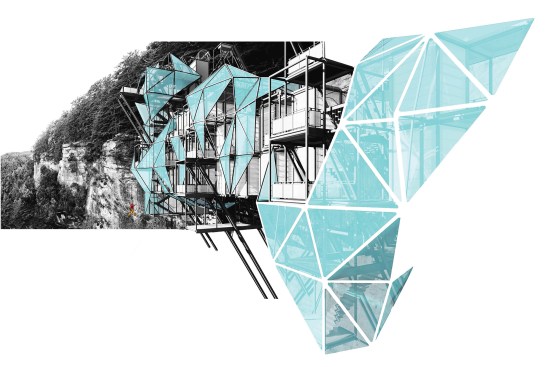
Joseph Brookover
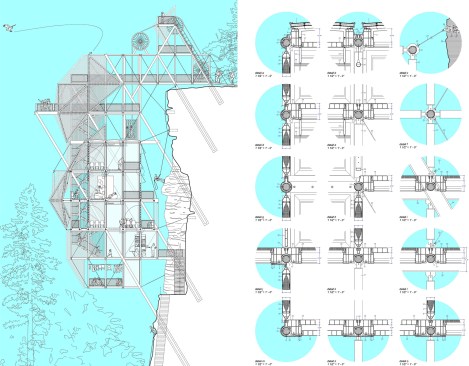
Joseph Brookover
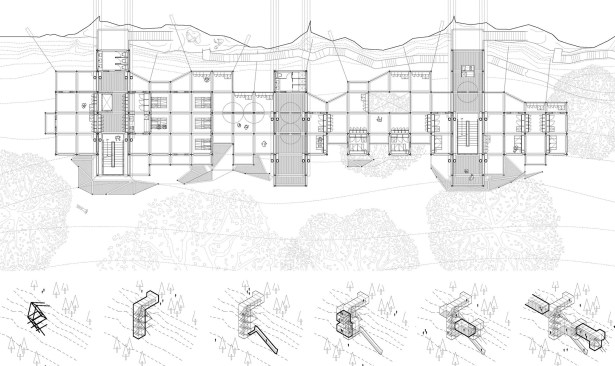
Joseph Brookover
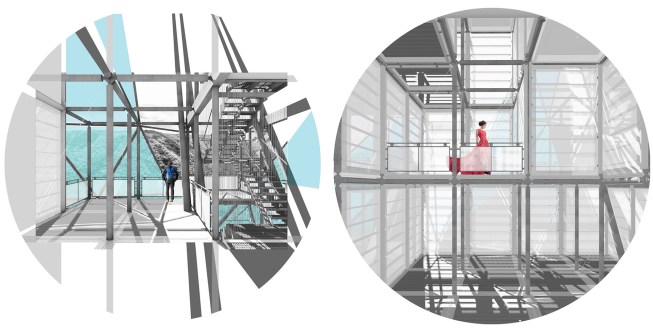
Joseph Brookover
Post-Industrial Appalachia
Andrew Shea’s proposal for a 10,000-square-foot visitor center builds directly onto an existing overhead structure that served to load coal onto freight trains. Exhibit and lecture areas are embedded between the existing steel support towers and cantilever over the river below. A barlike volume embedded into the hill connects these spaces and holds mechanical and storage areas.
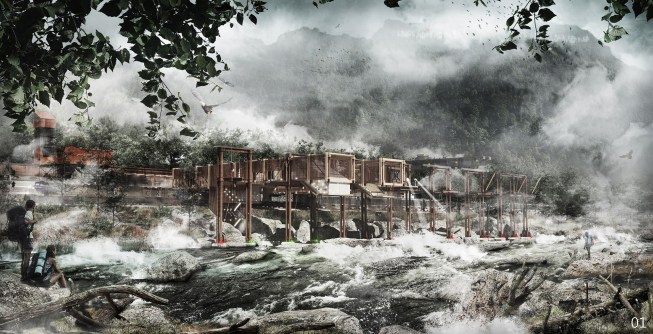
Andrew Shea
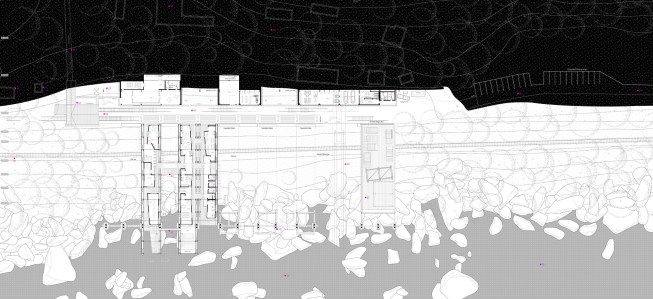
Andrew Shea
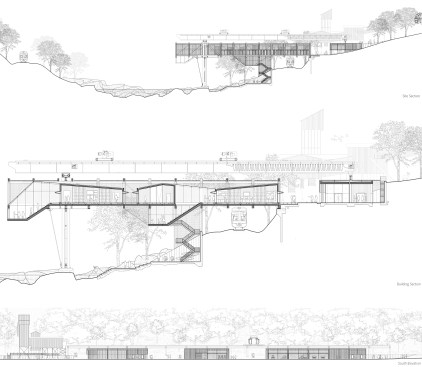
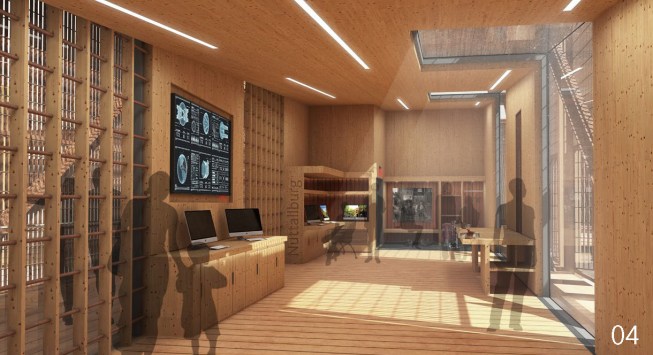
Andrew Shea
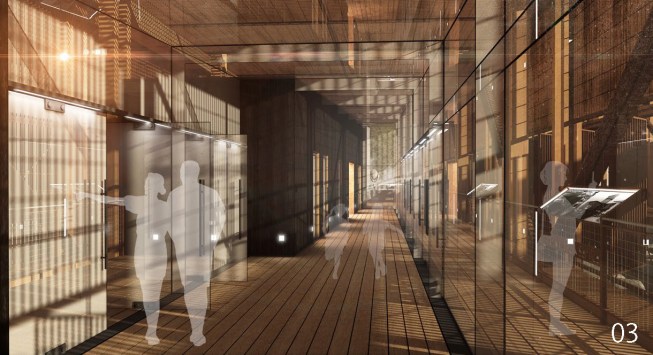
Andrew Shea
Memorial to the Fallen Miners
Nicholas Darin’s proposal for a memorial to miners killed in mining accidents throughout Appalachia features three suspended volumes that step down a hill, following the steep drop-off of the site’s topography. The visitor experience, which is intended to recall that of miners moving through the tunnels, culminates in the memorial proper: a 72-foot-tall steel cage filled with slate that references the collapses and slides that killed many miners in the region.

Nicholas Darin
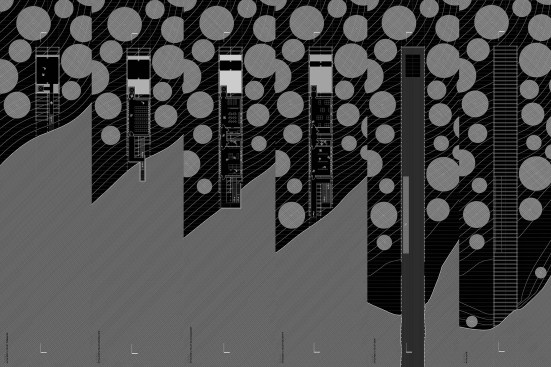
Nicholas Darin
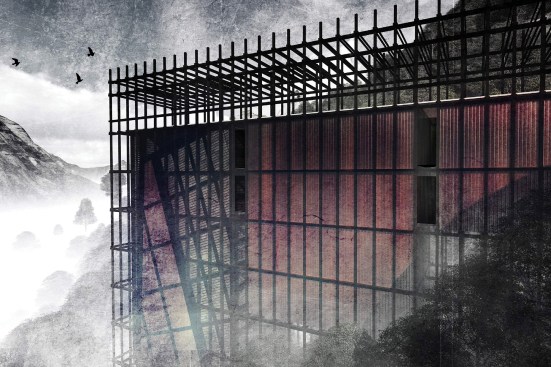
Nicholas Darin
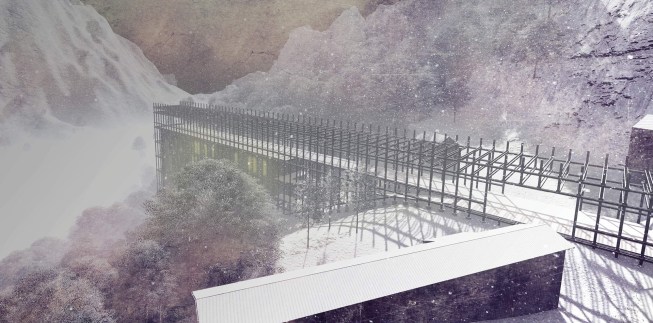
Nicholas Darin
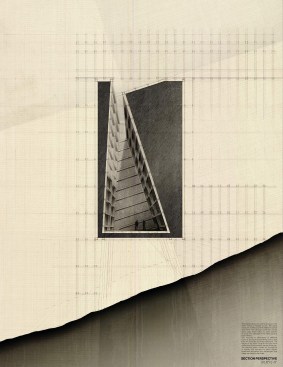
Nicholas Darin
Studio Credits
Course: Mining Appalachia
School: University of Virginia, School of Architecture
Level: M.Arch., without preprofessional degree (year three)
Duration: Spring 2017 semester
Instructor: Edward Ford, AIA (professor of architecture); Luis Pancorbo (assistant professor)
Students: Joseph Brookover, Nicholas Darin, Andrew Shea (submitted projects); Adjoa Akowuah, Carey Alcott, Joshua Kahn Aronson, Meredith Blake, Philip Chang, Di Chen, Blue Vincent Clements, Tamara Dennis, Benjamin Glor, Lizhe Han, Laurence Holland, Jennifer Hsiaw, Chad Miller, Shannon Ruhl, Matt Scarnaty, Sam Harrison Sidersky, Sean Sullivan, Hao Wang, Dillon Wilson, Tensae Woldesellasie, Fuhou Zhang
